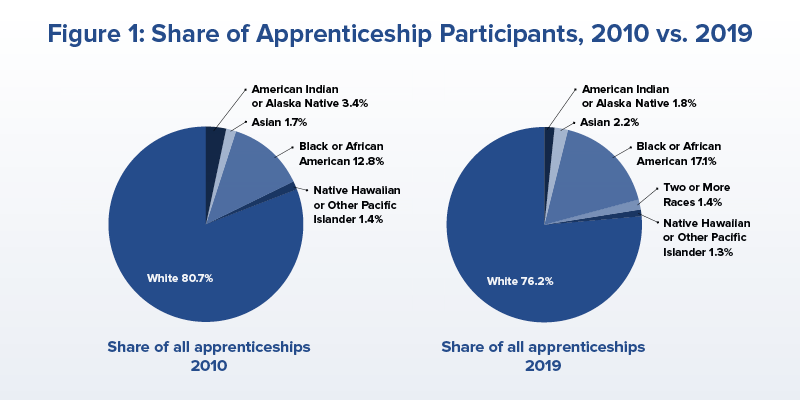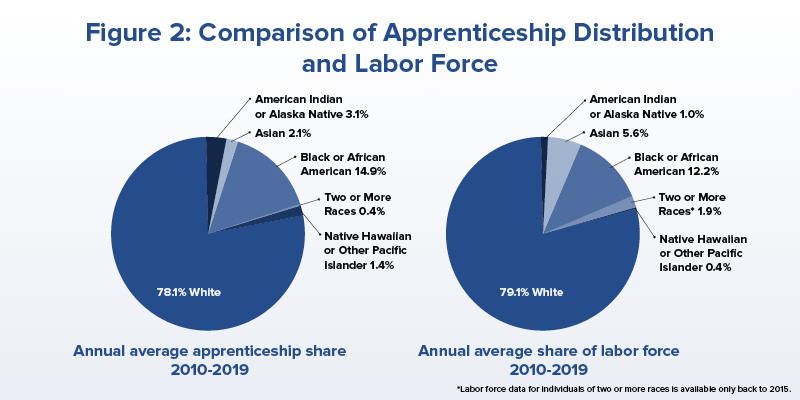ADVANCING EQUITY: FIVE DISTRICTS FOCUS ON IMPROVING OUTCOMES OF BLACK AND LATINX STUDENTS
It didn’t take long before the consequences of the pandemic shone a spotlight on the growing inequities within our communities and systems. Existing disparities in housing and food security, education, and health care, for example, grew wider between socioeconomic and racial groups.[1], [2], [3], [4] At the same time, a racial reckoning across the nation was a reminder that systemic racism and injustices persist.
With compounded stress and trauma, vulnerable students and families became more at risk for disengaging from school and the school community.[5] Many school and district leaders sought to create safe and healthy environments for their students and families, who were feeling increasingly disconnected mentally, emotionally, or physically.
DISTRICTS ASK FOR HELP TO CHANGE POLICIES AND PRACTICES THAT HARM BLACK AND LATINX STUDENTS
When the Regional Educational Laboratory (REL) West led a webinar in May 2020 on strategies for engaging vulnerable students and their families during remote schooling, participants conveyed the urgency of the situation. Many in attendance raised the need to address the causes of implicit bias and systemic racism, particularly given the current climate of racial injustices. One participant said, “We have to be intentional about discussing inequities. We have to be able to call out where the challenges are and move out of our comfort zones to shift outcomes.”
“We have to be able to call out where the challenges are and move out of our comfort zones to shift outcomes.”
REL West heard from multiple district leaders, who wanted more information and guidance about asset-based strategies for reshaping their district systems and structures in order to promote equitable learning environments. Specifically, these districts wanted to know how to identify and change existing policies and practices which reinforce inequities, especially those that are barriers to success for Black and Latinx students and their families. They wanted to enact change so that Black and Latinx members of their school community will feel a greater sense of belongingness and believe that their cultural identities are valued as assets and strengths.
EQUITY IN ACTION PROJECT FOCUSES ON RACIAL EQUITY CHANGE
In response to these requests, REL West formed the Equity in Action project. The project involved five California school districts committed to racial equity change. REL West leads Erin Browder and Lori Van Houten (along with team members Margit Birge, Rebeca Cerna, and Kamilah Wilson) supported these districts through coaching and facilitation. The project aimed to help these districts:
- Understand the assets and needs of Black and Latinx stakeholders in their district.
- Learn to develop and leverage racial equity plans created by diverse district teams.
- Ensure that racial equity is at the center of efforts to revamp district structures and supports so that Black and Latinx students and families are engaged and thriving.
The overarching goal for these districts was to increase the safety, well-being, and engagement of Black and Latinx students and their families. More specifically, each district identified its own improvement area focused on racial equity change for Black and Latinx stakeholders and developed a theory of action for that improvement area.
Over the course of the project, the districts refined their theories of actions to focus on addressing a systemic problem. For example, one elementary school district in the Central Valley initially aimed to increase participation and engagement of Latinx families in school events by focusing on recruitment of Latinx families. Later, the district team shifted its focus to implementing culturally responsive practices that would make their schools more inviting to Latinx families and improve their sense of belonging. A second school district in Los Angeles County initially set out to establish an African American Advisory Committee (AAAC) to engage and support Black students and families primarily through more school and district events. Later, the district team shifted to supporting teachers and staff with culturally and linguistically responsive (CLR) training to implement CLR practices throughout school sites. The district team leveraged the AAAC to communicate with students and families about CLR and expected changes in adult practices at schools. “Our focus,” Browder shared, “was on addressing and changing adult practices, not ‘fixing’ students and families.”
BUILDING DISTRICT CAPACITY TO RECOGNIZE IMPLICIT BIAS AND TO CHANGE SYSTEMS AND PRACTICES
REL West designed the Equity in Action project to support these five districts through an equity-focused process. REL West facilitators Browder and Van Houten wanted to provide responsive coaching to the districts to ensure that they were meeting teams where they were. Accordingly, the facilitators utilized participant feedback and ongoing dialogue with each district’s team leads to inform the activities of the next successive coaching session toward building capacity for racial equity change.
REL West’s equity-focused process, involving a variety of knowledge- and skill-building activities, helped each district tackle its racial equity work. Initial REL West-led sessions intentionally focused on forming district equity teams that were diverse in ethnicity and roles, as well as understanding the research on important concepts of educational equity, racial equity, racial trauma, and systemic racism. These steps in the Equity in Action process enabled district teams to develop common knowledge and a shared language as they began to uncover the root causes of particular inequities. Additionally, REL West facilitators coached the district teams on how to conduct courageous conversations using conversation protocols with probing questions to examine equity mindsets and unearth bias-based beliefs.[6]
To further build the capacity of the district teams, REL West introduced equity-centered tools and processes so that teams could gather information through stakeholder interviews, map assets, and collect and summarize data to inform changes to practices and policies. Finally, through REL West coaching, each district team defined its theory of improvement for changing an adult practice, related to its identified disparity or inequity, and developed an implementation plan.
As REL West continued coaching the district teams, both individually and as a cohort, the district teams acquired an equity-focused process to replicate on their own for any racial disparities they identified. From the onset, REL West aimed to help districts prepare for and sustain equity change work as they engaged in developing and acquiring habits of goal-setting, collecting and using data to inform policy and practices, and communicating findings on racial equity to stakeholders.
DISTRICTS LEARN TO ADDRESS BELIEFS, POLICIES, AND PRACTICES THAT IMPACT RACIAL EQUITY
While the districts are still implementing new strategies to reach their long-term goals around equity, the REL West facilitators believe that the project has achieved its more immediate objectives of building district staff capacity to engage in an equity change process. “The Equity in Action participants were able to build a shared language and understanding of equity-related concepts and practices,” said Browder. Van Houten added, “And they’ll be able to apply tools and processes that they now have to other racial equity efforts.”
“The Equity in Action participants were able to build a shared language and understanding of equity-related concepts and practices.” —Erin Browder
Feedback from the district teams about the project and their capacity to work on racial change was overwhelmingly positive. Team members reported that they have gained skills to use research and data on racial equity to inform district policies and practices, as well as to communicate effectively about equity-related data and findings to families, teachers, staff, and administrators.
Many participants in the project noted these positive takeaways:
- Having expert facilitation and knowledgeable coaching is invaluable. Coaches can help to facilitate equity-related learning, which is often new and challenging for district teams. Comments from district team members included, “It was most helpful to have experts in implementation science, with the tools to support how to go about this work. Having individualized support was very helpful.” Another participant noted, “Having a coach there to push our thinking as well as be a scribe capturing our thinking was extremely helpful.”
- Focusing on a specific racial equity area allowed for deep exploration. By examining biases and how they shape policies and practices, the teams unpacked the causes of the inequities they want to change. One member said the process was “a great way to reflect and really dive in and learn more about this work before implementing it.”
- Doing equity work with a diverse district team is beneficial. Forming a team that is diverse in ethnicity and roles contributes to decisionmaking informed by multiple perspectives. One team member wrote, “Coming together as a team worked really well as each one of us comes from a different background and has had different experiences and, therefore, different lenses.”
- Collaborating with and learning from other districts is supportive. The cross-district design of the Equity in Action project provided useful support, as one participant commented, “It was nice to hear from other districts as a reminder that we’re not alone in wanting change, and that it takes time and it’s complicated.”
One lesson learned was that the work of racial equity change requires ample time. Equity team members need time to build trust, especially if they have not worked together previously on the topic of racial equity. Additionally, team sessions require sufficient time to engage deeply in all of the components of an equity-focused process.
By the end of the project’s eight months, each team had identified a theory of action, developed an implementation plan, and determined implementation and outcome benchmarks to measure progress. Van Houten confirmed, “Participants saw how all the parts of the system — beliefs, practices, and policies — fit together to address racial inequities.”
RELATED RESOURCES
The following REL West resources were developed for the Equity in Action project and may be useful resources to district teams engaging in equity change work.
Equity in Action—Tools
- Building a District Equity Team. A worksheet with guiding questions for forming a district equity team with members representing different identities, roles, knowledge, and skills.
- Bias-Based Beliefs Resource. A reflection protocol to guide individuals or a team through examination of biased-based beliefs and behaviors.
- Communication and Engagement Plan. A two-part tool containing a framework, guiding questions, and worksheets for developing a communication and engagement plan with different stakeholder groups.
Equity in Action—PowerPoint slides
- Equity in Action: Targeted Improvement Efforts Toward Racial Equity in Five School Districts. These slides, from a virtual session for the Teachers’ Institute and Leading Change Conference in June 2021, include information about REL West’s work in the five districts, including steps and tools in an equity-focused process, and lessons learned.
RELATED EVENTS
[1] Center on Budget and Policy Priorities. (2021, October). Tracking the COVID-19 economy’s effects on food, housing, and employment hardships. Retrieved from https://www.cbpp.org/research/poverty-and-inequality/tracking-the-covid-19-economys-effects-on-food-housing-and
[2] Wolfson, J. A., & Leung, C. W. (2020). Food insecurity and COVID-19: Disparities in early effects for US adults. Nutrients, 12(6), Article 1648. Retrieved from https://www.ncbi.nlm.nih.gov/pmc/articles/PMC7352694/
[3] Pier, L., Hough, H., Christian, M., Bookman, N., Wilkenfeld, B., & Miller, R. (2021, January). COVID-19 and the educational equity crisis: Evidence on learning loss from the CORE Data Collaborative. Stanford, CA: Policy Analysis for California Education. Retrieved from https://edpolicyinca.org/newsroom/covid-19-and-educational-equity-crisis
[4] Thakur, N., Lovinsky-Desir, S., Bime, C., et al. (2020). The structural and social determinants of the racial/ethnic disparities in the U.S. COVID-19 pandemic. What’s our role? American Journal of Respiratory and Critical Care Medicine, 202. Retrieved from https://doi.org/10.1164/rccm.202005-1523PP
[5] Minkos, M. L., & Gelbar, N. W. (2020). Considerations for educators in supporting student learning in the midst of COVID-19. Psychology in the Schools, 10.1002/pits.22454. Retrieved from https://www.ncbi.nlm.nih.gov/pmc/articles/PMC7753346/
[6] Fergus, E. (2019). Confronting our beliefs about poverty and discipline. Phi Delta Kappan,100(5), 31–34.



